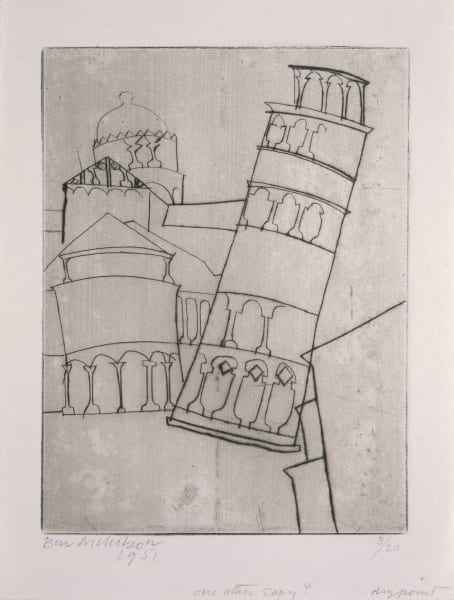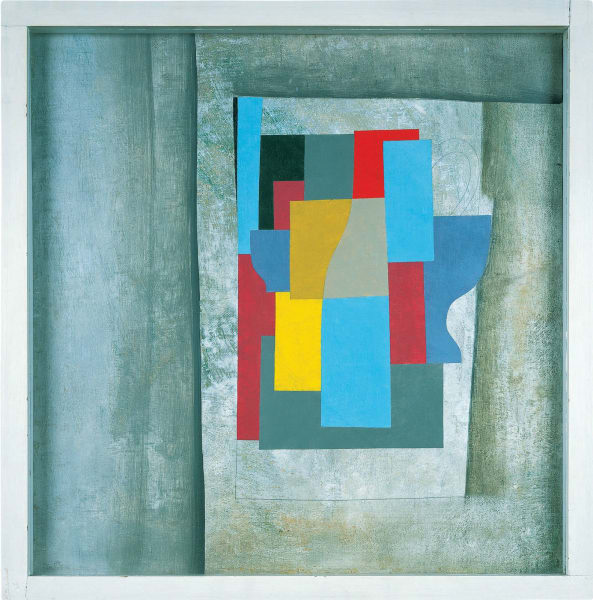Ben Nicholson
Ben Nicholson (1894 - 1982) born in Buckinghamshire, England, was one of the most influential and important British artists whose work paved the way for abstraction in the U.K. In 1910 he studied at the Slade School of Art, London, where he met Paul Nash, but left after a year to pursue painting. Nicholson had his first solo exhibition at the Twenty-One Gallery, London in 1924.
In 1933 he co-founded Unit One, whose members included Paul Nash, Henry Moore, Edward Burra and Barbara Hepworth whom he later married in 1938. He spent some time travelling abroad, including to the studios of Picasso, Braque, Arp, Brancusi and Mondrian in Paris, before settling in London between 1932 and 1939. Shortly before the Second World War he moved to Cornwall with his family. St Ives was to become a major influence on Nicholson, and remained his home until 1958 when he returned to London.
In 1954 Nicholson represented Britain at Venice Biennale, alongside Francis Bacon and Lucian Freud. His exhibition travelled to Amsterdam, Paris, Brussels and Zurich before being shown at the Tate Gallery, London, in 1955. Over the course of the next four decades his work was the subject of numerous solo and important group exhibitions in museums around the world. Retrospective exhibitions include Kunsthalle, Berne (1961), Museum of Fine Arts, Dallas (1964), Albright-Knox Art Gallery, Buffalo (1978), which travelled to Brooklyn Museum, New York; Tate, London (1993); and Tate St Ives (2009).
In 1952 Nicholson won first prize at the Carnegie International, Pittsburgh. He was awarded the first Guggenheim International painting prize in 1956, and the international prize for painting at the Sao Paulo Biennale in 1957. He accepted the Order of Merit in 1968, and received the Rembrandt Prize from the Goethe Foundation, Basel, in 1974.
Aside from the reliefs for which he became internationally established, Nicholson made a significant body of prints, which he produced in phases rather than continuously throughout his life. Between the wars he carved relief prints - apart from one woodcut he worked only in linoleum; immediately after the Second World War he made a small group of drypoints and, in the 1960s, he executed a large group of etchings with the Swiss printer François Lafranca.
Ben Nicholson died aged 87 in 1982, in London, England, having made a vital contribution to the development of British art in the twentieth century.
In 2007 Alan Cristea Gallery held the largest ever exhibition of his prints and to accompany this published the catalogue raisonné of the artist's graphic work.









